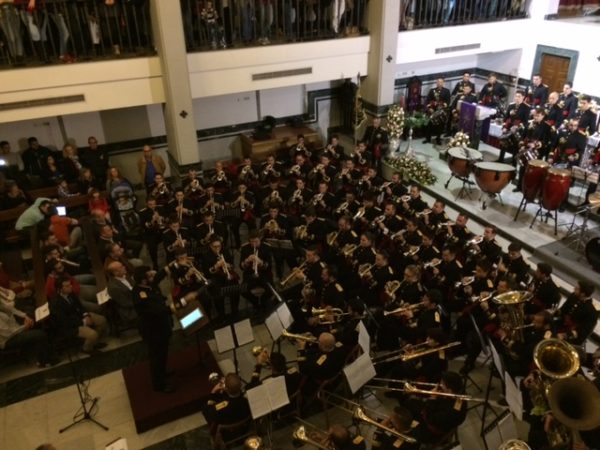He’s a lawyer, thicko!
The brass bands of New Orleans played a very important part in the international development of jazz towards the end of the 19th Century, by mixing typical African sounds with military melodies, resulting in an exclusive new sound which became fully identified with the state of Louisiana.
Although no single format exists, these bands are usually made up of three sections: Brass [horn section], woodwind [reed instruments] and rhythm [percussion]. The most typical instruments are the trombones and trumpets amongst the brass; saxophones, clarinets and flutes amongst the woodwind. The rhythm section allowed for more variety, combining piano, guitar, drums and small percussion instruments.
Playing music is important. It implies many things. It’s to do with making history, being part of a group or a community. It means letting yourself get carried along by art and feelings. The world of cornet and drum bands is no different. In fact, that’s exactly what they are about. A lot could be said of these bands, but I am only going to talk about their capacity to conjure up images and feelings.
Last December, the cornet and trumpet band belonging to the El Paso and La Esperanza brotherhoods took us back to far off times and places. They transported us back in time to a New Orleans jazz club. And it wasn’t just because of the instruments or the way the band was set up. It wasn’t even because of the pieces they played. It was more than that. They actually believed in it. They really felt they were other musicians from another time.
The work of the musical director was outstanding, especially the arrangements which Alfonso López created especially for the occasion, superbly adapting Works which had never been played before by a cornet and drum band.
The concert began with a Christmas medley. This was followed by a rendition of “Concierto de Aranjuez” in a solo trumpet and brass version which was outstanding due to its drum accompaniment. The superb trumpet solo by Mario Gutiérrez totally silenced the church.
Next it was the turn of ‘Abba Gold’, when they played some of the Swedish group’s classics such as ‘Dancing Queen’, ‘Mamma Mia’, ‘Fernando’ and ‘The winner takes it all’.
To round things off came ‘Can’t take my eyes off you’, a sixties number composed by Bob Crewe and Bob Gaudio. This was something novel since it added a woodwind section to the typical rock band instruments [guitar, drums, bass and piano].
To see them in action was an absolute delight, both because of how they were positioned and how well they worked together. Particularly interesting was the percussion which, in addition to the usual drums and bass drums of this type of band, included a drum set, kettle drums, cymbals and small percussion instruments.
Why am I writing this? It’s over now. It’s nothing new. It’s already been talked about by lots of people. However, I would like to mention a conversation I had with an acquaintance of mine about this concert. When talking about the repertoire and the work which was involved, that person came out with this. No punches pulled, if you see what I mean:
- ‘They’ve put a lot of work into it, there’s no doubt about that. But it’s not that they have a lot else to do, is it? They have all the time in the world and rehearse for hours every day’.
- ‘Do you really think so? Did you like the solo in ‘Concierto de Aranjuez?’
- ‘Yes’.
- ‘Well, the one who played it is a lawyer, thicko!’.







